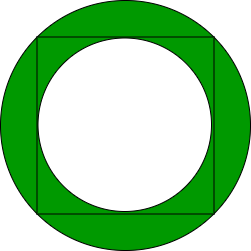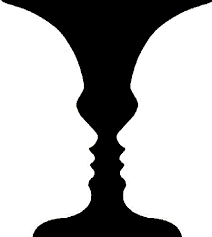In a recent group conversation, a colleague lightheartedly asked something along the lines of, “How talkative do you think Adya is?” The other colleague responded with, “Yeh toh expert hai (She is an expert)”.
And I dreaded what I thought would follow next. Because I’d feel quite misunderstood if someone actually thought I talk a lot. That’s not how I see myself. I speak when I am comfortable, I speak only around specific people. And I talk when there’s room to talk.
I was scared of being seen through those labels and I braced myself to politely smile after the topic ended. But it changed its course when the other colleague added, “Expert hai sunane mei bhi, sunne mei bhi, bolne mei bhi, samajhne mei bhi (She is an expert in talking and listening as well, and in explaining too”. It was a huge moment of relief for me. I felt seen and understood for more than a single part of me.
Labelling You
Have you ever wondered what labels do to you?
Think of six labels you resonate with. And yes, it’s easy to come up with six.
When you think of these labels, these are coming either from your idea of yourself or something people associate you with. After having done this activity with myself and a few friends I’m guessing you too have both positive and negative terms.
Now question how these labels make you feel. How has the association with this label changed for you over time? Has this label shaped parts of you? Have you shaped some of these labels?
Is a label aiding or confining? Is it your walking stick or putting you in a sick role? Enabling or limiting?
When exactly and why exactly does diagnosis become king? When exactly do labels become parasites which just won’t get off the host?
How do certain words stick? What makes these words stand out for us?
Forming an image
While forming an image of a person, I decide to selectively remember some parts of them. And then come up with adjectives to describe them or use adjectives they have used for themselves and which made sense to me upon hearing it. Because it fits and is in sync with my opinion of them.
It’s also this tendency to try to make sense of what seems different. Whatever seems a little extreme compared to a baseline standard we have set for ourselves. From our expectations.
Try thinking of someone not so close to you and the image you have formed of them.
Let’s deviate a little and pause here. Why is it that someone who is close to us is not subjected to limiting labels by us? We have the capacity to see them as a whole. But we choose to see others, who are not close to us, in their parts. We then attribute these parts to the whole of them. Then of course there are also other cases where we stop consciously seeing them altogether. Commonly seen in marriages where one spouse is reduced to the function they serve.
Now going back to form an image.

Defining, Shaping
I want to define. I want to define to make sense of the world. Define to put the world in order. But with this need to define, I also limit. I draw boundaries and keep drawing squares and circles. And then I think what lies within these shapes, is the shape of you. The shape of the world through the shape I have given to the world.
I probably can’t stop putting labels and shaping because of my need for certainty. I need to see it. And I can’t see what seems endless and expansive. For eg. at the beach, my camera focuses on the well-defined moon and the tree clear to me with the backdrop of the overwhelming vastness of the sea and sky.

A recent conversation with someone,
“Your generation likes to use condensed terms. Our generation was at odds at different points for different things”.
Another conversation with someone else,
“You are not a researcher. You do research. It’s not your whole identity, it’s part of your identity.”
Are we walking brand names? Have we reached this level of objectification? Reducing ourselves and the world to mere objects/instruments which we can select from depending on necessity, utility, desire, and preference?
In my attempt to understand something, I first begin by naming. I do this by listing, and categorizing based on (seemingly) shared characteristics. Classifications (and condensation) are useful to communicate in the same language. A common language for uniformity. Where you and I can be at peace in knowing that we are on the same page. That we are talking about the same thing because we have settled on a shared name for what we talk about.
But what does not make sense is that our understanding of the classified object still differs and ultimately the classified object is what we perceive it to be. Is it the shape we have given it or something else? Does it exist in a vacuum?
Surely there is uniformity and ease, but at what cost?
Then do we remain with the complexity and just use umbrella terms instead? Because we can’t seem to escape talking without naming and defining and labelling.
So there’s this tug of war between condensation, defining on the one hand and retaining complexity and details on the other.
Conclusion: Ask ‘it’ before tagging it
If I must label, I must also question who the label is serving. Who is it enabling? Is it the person subjected to the classification? Do they feel enabled? Or is it the person who is labelling? Is this for my ease or yours? And I can’t just say this is for your ease because do I know how the label works for you? If I have just assumed labels are important for you and will enable you, that’s coming from unrequired benevolence.
I probably can’t stop labeling but something I can work on is, expanding my own awareness instead. Being aware of my need to limit what inherently can’t be limited and in that process also knowing my ‘self’ better. Knowing my self’s depth.
Leaving room for the parts I do not see – within and without.
Perhaps that would also mean leaving room for complexity and imagination. A space to believe in what I don’t know, and have not come across. Faith for the leap I know not about, faith for the leap I cannot take.
Or, I make peace in knowing/with believing that I am an object. Let’s say we are books on a bookshelf with different names and each name strikes a cord with some reader and thus we choose. Some names are catchy, some books need to be opened for the interesting parts to be discovered.
I’d rather be a sparrow than a snail
–Simon and Garfunkel
Yes, I would
If I could
I surely would
I’d rather be a hammer than a nail
Yes, I would
If I only could
I surely would
Away, I’d rather sail away
Like a swan that’s here and gone
A man gets tied up to the ground
He gives the world its saddest sound
Its saddest sound




0 Comments